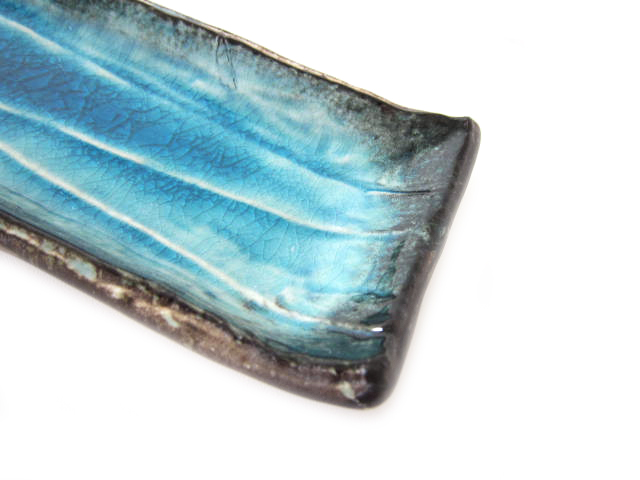Beauty and Functionality in Harmony
Japanese cuisine is a unique blend of flavors, visual appeal, and cultural significance, and the vessels used to serve it play a vital role in enhancing this experience. Plates, just like bowls, carry their own importance in Japanese dining culture. This guide aims to provide a comprehensive understanding of the variety and uses of Japanese plates, along with their cultural significance.
1. Dinner plates (Osara)
 The Osara, the Japanese equivalent of a dinner plate, is used for serving a variety of dishes. Osara are often made from ceramics and can vary greatly in size, shape, and design based on the specific food being served.
The Osara, the Japanese equivalent of a dinner plate, is used for serving a variety of dishes. Osara are often made from ceramics and can vary greatly in size, shape, and design based on the specific food being served.
2. Sushi plates (Sushi-Zara)
 Sushi-Zara are rectangular or oval plates specifically designed for serving sushi. Their elongated form provides the perfect platform for presenting sushi rolls or nigiri in an elegant and organized manner.
Sushi-Zara are rectangular or oval plates specifically designed for serving sushi. Their elongated form provides the perfect platform for presenting sushi rolls or nigiri in an elegant and organized manner.
3. Small plates (Kozara)
 Kozara are small plates used for individual servings of appetizers, side dishes, or condiments. They are typically used to serve foods like pickles, wasabi, or soy sauce.
Kozara are small plates used for individual servings of appetizers, side dishes, or condiments. They are typically used to serve foods like pickles, wasabi, or soy sauce.
4. Long plates (Nagazara)
 Nagazara, or long plates, are used for serving long, slender foods like grilled eel, tempura, or yakitori skewers. They are also perfect for arranging slices of sashimi.
Nagazara, or long plates, are used for serving long, slender foods like grilled eel, tempura, or yakitori skewers. They are also perfect for arranging slices of sashimi.
5. Square plates (Kaku-zara)
 Kaku-zara are square plates that are often used to serve traditional Japanese sweets or bite-sized appetizers. They are also popular for Bento lunches, as they allow for neat compartmentalization of different food items.
Kaku-zara are square plates that are often used to serve traditional Japanese sweets or bite-sized appetizers. They are also popular for Bento lunches, as they allow for neat compartmentalization of different food items.
6. Serving platters (Sanbo or Dai)
 These larger trays or platters are used to serve communal dishes or an array of different foods for multiple people. They are often used in formal dining situations.
These larger trays or platters are used to serve communal dishes or an array of different foods for multiple people. They are often used in formal dining situations.
Aesthetic and cultural significance of Japanese plates
Japanese plates are not just about functionality. They are a form of artistic expression and reflect the deep-rooted aesthetics of Japanese culture. The colors, patterns, and shapes are carefully chosen to complement the food and the occasion. For example, a sushi plate might be simple and monochrome to allow the vibrant colors of the sushi to stand out, while a plate used for a festive occasion might be more ornate.
Ceramic plates, in particular, are a testament to Japan’s rich pottery tradition. Different regions of Japan have distinct ceramic styles, and owning a variety of plates from different regions can provide a unique, diverse dining experience.
Choosing the right plate for your home
When choosing Japanese plates for your home, consider both their practical use and their aesthetic appeal. If you often enjoy sushi at home, having sushi-zara would be beneficial. If you frequently host parties, larger serving platters would be a great addition.
Remember, in Japanese dining, the visual presentation of the food is almost as important as the taste. So, take into account the colors and textures of the food you typically serve when choosing your plates.
Caring for your Japanese plates
Most Japanese plates, particularly those made of ceramics, are dishwasher safe. However, hand-painted or lacquerware plates should be hand-washed to maintain their appearance. Never use metallic or lacquerware plates in a microwave.
In conclusion
Japanese plates, with their varied forms and designs, are a crucial component of the dining experience. They exemplify the Japanese principle of finding beauty in simplicity and the harmonious balance between form and function. By understanding the types of Japanese plates and their uses, you can elevate your dining experience and appreciate the subtleties of Japanese culinary aesthetics. So, the next time you serve a meal, remember that you’re not just serving food – you’re sharing a piece of Japanese culture and tradition.

Leave a Reply